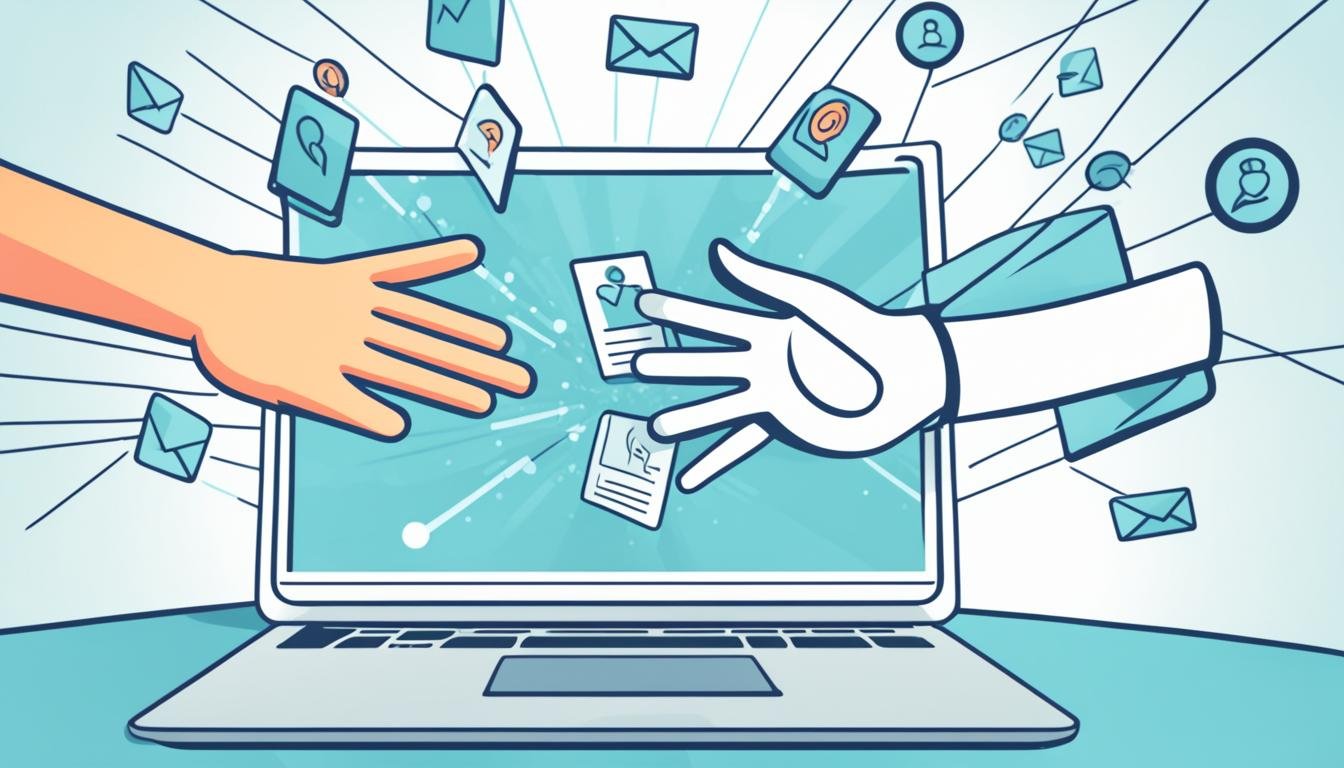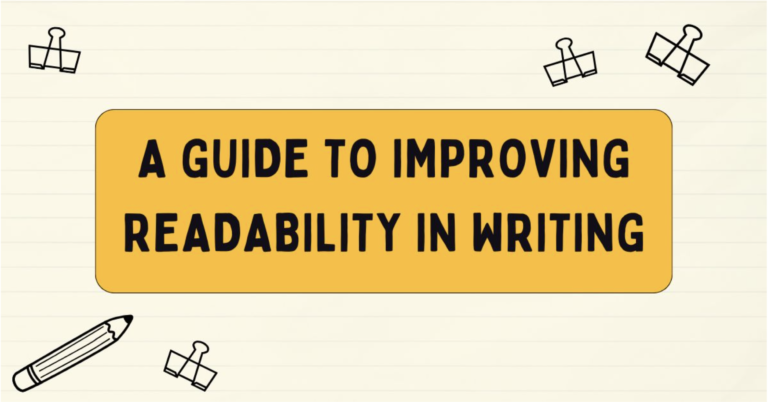Email Marketing for Lead Generation: Advanced strategies.
A whopping 89% of marketers say email marketing is key for getting leads in 2024. It’s a mix of creativity, making things better, and knowing your audience well. The goal is to connect with potential customers using smart tactics.
To get the most out of email marketing, marketers use advanced strategies. They focus on quality over just sending lots of emails. They treat leads like plants, growing them into customers with engaging content and valuable info.
Personalized emails work great, bringing in six times more sales than generic ones. A/B testing is also crucial. It helps figure out what works best for subject lines, calls to action, and how emails look.
Key Takeaways
- Email marketing yields an average ROI of $42 for every $1 spent on B2B lead generation.
- Personalized emails significantly enhance engagement and conversion rates.
- Regular list audits maintain high-quality, engaged subscriber lists.
- Using A/B testing improves the effectiveness of email components such as subject lines and CTAs.
- Automation helps streamline the nurturing process, building stronger relationships with leads.
Understanding Email Lead Generation
Email lead generation is key in today’s digital marketing. It’s about getting marketing-qualified leads (MQLs) by offering something valuable in exchange for their contact info. This starts a relationship that could turn into sales, making it vital for any email marketing strategy.
Definition and Importance
Email lead generation is about getting potential customers’ info through an opt-in form. This form asks for a name and email address. It helps build an email list for marketing later. The Data & Marketing Association found that email marketing in 2022 brought in $36 for every $1 spent, showing it’s a smart investment.
Benefits of Email Lead Generation
An effective email marketing strategy for lead generation has many perks:
- Cost-Effective: High ROI, with $36 return for every $1 invested.
- Targeted Communication: Personalized emails lead to better engagement and more conversions.
- Scalability: Marketing efforts can grow as your list expands.
Key Metrics to Track
It’s crucial to keep an eye on certain metrics to make email campaigns better and improve lead generation. Important metrics include:
- Conversion Rates: Shows how well your emails get people to take action.
- Click-Through Rates: Measures how engaging your email content is.
- Email List Growth Rates: Tracks how many new subscribers you’re getting.
By watching these metrics, marketers can tweak their strategies. This leads to better lead generation and builds strong customer relationships over time.
Email List Building Techniques
Building a strong email list is key for a good marketing plan. We’ll look at ways to draw in and keep quality leads. This will help your list grow and bring in more money.
Offering Valuable Incentives
One top way to build email lists is by offering great incentives. A study by Digital Marketer showed that a pop-up ad for returning visitors got 2,689 leads in two weeks. This boosted the time people spent on the page by 54%.
Using things like ebooks, webinars, or special discounts can make visitors want to sign up.
Optimizing Opt-In Forms
It’s also key to make opt-in forms better. Personalized calls-to-action (CTAs) get 42% more views and submissions than generic ones, HubSpot found. Using fun language like “Download,” “Exclusive,” or “Access” in your CTAs can help get more people to sign up.
Putting opt-in forms on busy pages, like the blog homepage, headers, and footers, makes them more visible.
Leveraging Social Media
Using social media is a smart way to grow your email list. You can host contests, share interesting content, and offer special deals on social networks. This can bring in more people.
Referral programs, like Onnit’s, where you get $20 for each referral, can grow your list through word of mouth. Also, using scroll boxes and exit pop-ups on your site can catch visitors’ attention and get them to subscribe.
Regularly checking and improving these methods keeps your efforts in getting better results. This leads to more engagement and big returns on your investment.
Advanced Segmentation Strategies
In automated email marketing, advanced segmentation is key to success. By sorting your email lists by demographics, behaviors, and engagement, you can make your emails hit home with each group. Let’s look at three main ways to segment your emails for better results.
Demographic Segmentation
Demographic segmentation sorts your list by age, gender, income, and location. This makes your messages more personal to your audience. For example, a company split its list by gender and saw a 6.44% click-through rate for men and 7.31% for women. This was a 121% boost over the average, showing how targeted emails work well.
Behavioral Segmentation
Behavioral segmentation groups people by how they interact with your emails and site. It looks at past buys, browsing, and who opens emails. A beverage company split its list into coffee and tea fans by purchase history. This way, each group gets content that really speaks to them, leading to better engagement and sales.
Engagement-Based Segmentation
Engagement-based segmentation sorts subscribers by how much they interact with your emails. It helps spot and re-engage inactive users or remove them to save money. Companies using this see better email campaign results, like more opens and clicks, and save money by using resources wisely.
Using these advanced segmentation methods can make your automated email marketing much more effective. Your targeted campaigns will likely get better results.
Email Marketing Campaign Design
An engaging email marketing strategy relies on the design of your email campaigns. From catchy subject lines to designs that work on mobiles and clear calls to action, each part is key. They help make sure people engage more and convert better.
Creating Clear and Compelling Subject Lines
Your email’s subject line is what catches people’s attention first. It should be short, clear, and make a promise to draw people in. Good subject lines make people curious, feel urgent, or relate to them, making them want to open the email.
Using strong words and making it personal can really boost how many people open your email. This leads to better conversion rates.
Designing Mobile-Friendly Emails
Most emails are now opened on mobiles. So, making sure your emails work well on mobiles is a must. A good email strategy means focusing on designs that work on all devices.
This means using easy-to-read fonts, layouts that are easy to follow, and buttons that are easy to tap. Making your emails mobile-friendly improves the user experience and helps get more people engaged.
Including Strong CTAs
A strong Call-to-Action (CTA) is key to getting your audience to do what you want. CTAs should stand out, be clear, and strong, with language that tells people exactly what to do. They could be about buying something, signing up, or downloading something.
Good CTAs are crucial for conversion optimization. They help turn people who are interested into actual customers.
Leveraging Automated Email Marketing
Automation in email marketing lets marketers quickly and personally connect with subscribers. It saves time and makes sure messages reach the right people at the right time. We’ll look at three key types of automated emails to boost your lead generation.
Welcome Email Sequences
Welcome emails are crucial for making a good first impression. They go out right after someone joins your list. They introduce your brand and help new subscribers get used to it.
A good welcome sequence builds trust and prepares the ground for future messages. It helps turn leads into loyal customers from the start.
Lead Nurturing Emails
Lead nurturing emails educate and guide people through the sales process. They send valuable content over time to keep people interested. Making these emails personal based on what users like helps them feel connected.
Behavioral Trigger Emails
Behavioral trigger emails react to what your subscribers do. This could be leaving items in a cart, looking at certain products, or downloading something. These emails meet the immediate needs of your subscribers, making them more relevant and engaging.
Using these automated email strategies can really improve your lead generation. It helps build stronger relationships with your subscribers and leads to better results. Plus, automation lets you track and analyze your efforts, so you can keep getting better.
Personalization Techniques in Email Campaigns
Personalization in email campaigns is key for a strong email marketing plan. It leads to more engagement and better conversion rates. By using dynamic content, personalized subject lines, and messages for specific groups, marketers can make their emails more effective.
Using Dynamic Content
Dynamic content lets marketers customize emails for each subscriber. They use data on preferences and behavior. This makes emails more relevant and interesting.
For example, stores can suggest products based on what customers have looked at or bought before. This can help sell more items. Also, showing images that match where the subscriber lives can make people click more, by 29%.
Personalized Subject Lines
Personalized subject lines can make more people open your emails. Using someone’s first name in the subject can increase opens by 26%. This makes the email seem more personal and relevant.
Since 68% of Americans decide to open an email based on the “from” name and subject line, this trick is very important. It helps grab the reader’s attention.
Segment-Specific Content
Segmenting your email list and making content for each group can greatly improve your campaign. You can sort your audience by many factors, like demographics or past actions. This way, everyone gets content that interests them more.
Using very specific personalization in email campaigns can lead to better engagement and more sales. Personalized emails often get more opens and clicks. So, segmenting your audience is a key part of a successful email marketing plan.
Email Marketing for Lead Generation
In today’s digital world, email marketing for lead generation is key for businesses to succeed. It has a high return of $44 for every $1 spent. This makes it a powerful way to boost brand awareness and build strong customer ties. Recent data shows it can bring in up to 4400% return, making it vital for reaching potential customers.
For email marketing for lead generation to work, several factors are crucial. Personalization is a big plus, greatly increasing engagement and results. Almost 70% of B2B buyers like rich text emails and personalized messages, which helps build stronger connections and gets better responses.
Millennials, who prefer email over phone calls, are a big part of the market. So, making emails personal is more crucial than ever.
Segmentation and automation are also key to successful email marketing. Only 13% of B2B companies use automation in their emails. Automation can make processes smoother, target better, and lead to better campaigns. Emails that are segmented and targeted reach the right people more effectively, which helps in getting quality leads.
Social media also helps with email marketing. With 3.196 billion active users worldwide, it can help get email leads and followers. Social media’s broad reach can support email campaigns by touching leads through various channels.
Testing and analyzing email campaigns is also important. But, less than half of B2B companies test their email marketing. Regular testing and tweaking give insights into what customers like and do, helping marketers improve their strategies.
Email marketing has shown it can bring great returns. Over 75% of businesses see ‘good’ or ‘very good’ ROI from it. By using personalization, segmentation, automation, and social media, businesses can fully use the power of email marketing for lead generation.
Conversion Optimization Strategies
To make your email marketing better, you need to use conversion optimization strategies. These strategies help turn your campaigns into lead generation tactics. They make sure your emails work well to convert prospects.
Using A/B Testing
A/B testing is key for conversion optimization. It lets you test two versions of an email on different parts of your audience. This way, you can see which version does better. You can test things like subject lines, CTAs, or email layouts.
Since 57% of B2B buyers decide before talking to a salesperson, using A/B testing is crucial. It helps you make emails that really grab attention.
Tracking and Analyzing Metrics
It’s important to track and analyze your email metrics. This helps you see what works and what doesn’t. You should look at open rates, click-through rates, and conversion rates.
Personalized emails have a 29% higher open rate and a 41% higher click-through rate than generic ones. These stats are key for improving your lead generation tactics. They help you keep getting better.
Optimizing Email Send Times
Another important part of conversion optimization is sending emails at the right time. The timing can really affect how people engage with your emails. For example, responding quickly to leads can increase conversion chances by 400%.
By looking at engagement data, you can find the best times to contact your audience. This way, your emails are more likely to be seen and acted upon.
Conclusion
Email marketing is a strong tool that mixes creativity with data analysis. It helps businesses grow by making emails more engaging and effective. By using targeted emails, companies can see a big jump in customer interaction and profits.
Adding personal touches to emails can make people more likely to open them by up to 50%. This shows how important it is to make emails relevant. Making sure emails work well on mobile devices is also key, as most people check their emails on phones.
Testing different email parts helps improve how well campaigns do. Automation is also key for growing a business. It makes things run smoother and keeps emails personal for everyone.
Segmented emails really help in getting more people involved and making more money. With an amazing return of 3800% (DMA), email marketing is a top choice for getting new customers. By always testing and improving, companies can build strong bonds with their customers. This leads to ongoing growth and success in today’s digital world.
Source Links
- Boost Your Business: 11 Effective Email Marketing B2B Lead Generation Strategies
- How to Generate and Close More Leads With Email Marketing
- 15 Best Practices for Email Marketing Lead Generation | Sender
- Email Lead Generation: 10 Tried and True Tactics You Should Know
- Email Lead Generation: What Is It & How to Acquire Leads
- 8 Email Marketing Lead Generation Techniques You Need to Know
- How to Build an Email List from Scratch: 11 Incredibly Effective Strategies
- A Comprehensive Guide to Email Lead Generation
- How to Build an Email List: 10 Tactics That Work (2024)
- Email Segmentation: 11 Strategies to Win at Email Marketing
- Optimizing Your B2B Email Marketing Strategy for Lead Generation – Intelemark
- 9 Email Marketing Lead Generation Strategies to Boost Your Conversions
- Email Marketing Software Leveraging Email Marketing for Lead Generation
- Email Marketing
- The Ultimate Guide to Personalized Email for Every Marketer
- 12 Email Lead Generation Tactics to Double the Response Rate
- Email Marketing for Lead Generation: How to Close More Deals
- How Do You Get Email Leads For Email Marketing?
- B2B Email Marketing Strategy for Lead Generation
- The Cold Emailing Blueprint for Generating Leads (2023)
- 8 Email Marketing Lead Generation Techniques You Need to Know For 2024
- 8 Effective Lead Conversion Strategies
- 28 Proven Strategies and Techniques for Lead Generation and Conversion
- The Role of Email Marketing in Lead Generation
- Email Marketing Tactics for Lead Generation






